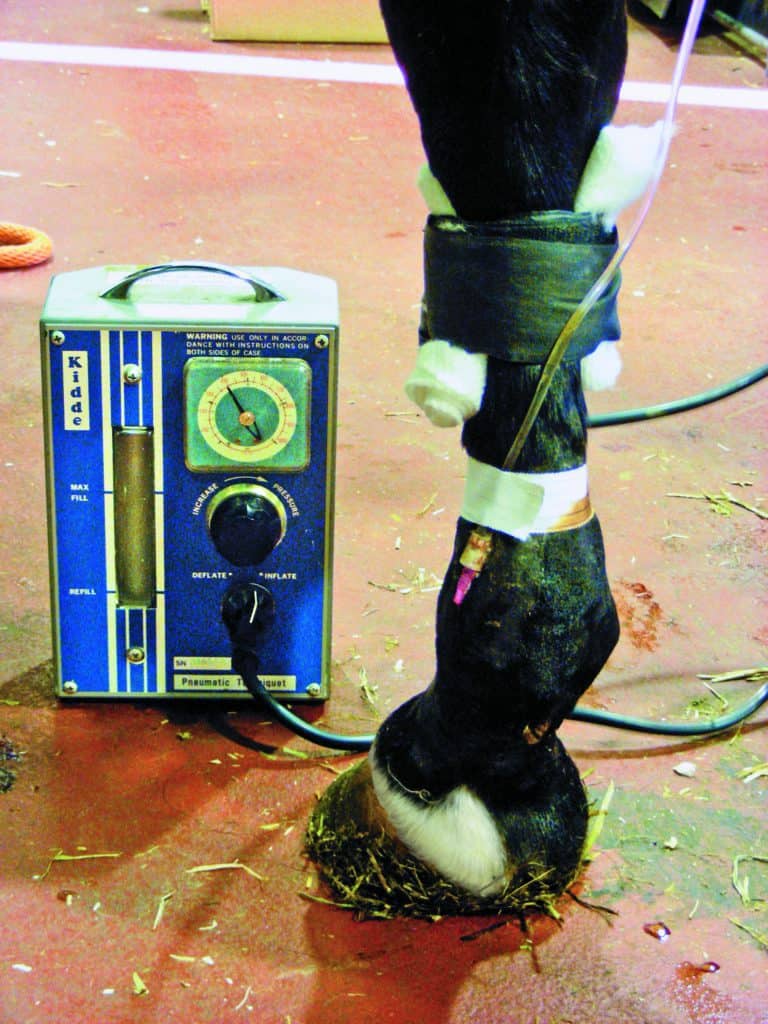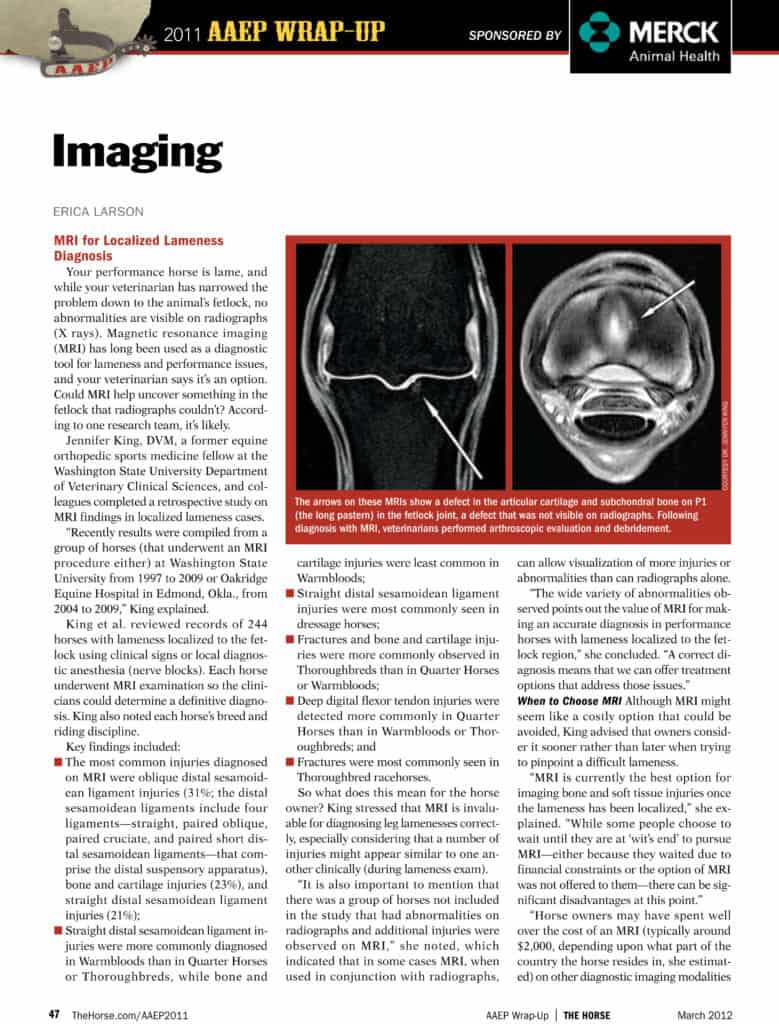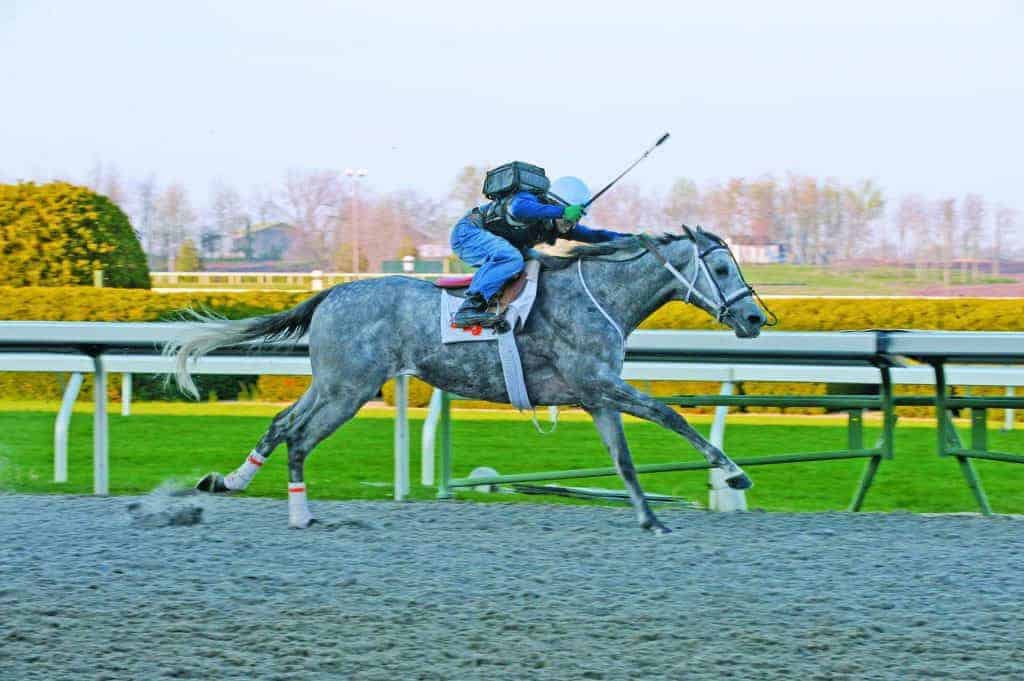Applications for AAEP Foundation Funding Due May 1
Priority emphasis will be given to applications that have the most impact on horse health and welfare.
Priority emphasis will be given to applications that have the most impact on horse health and welfare.

Researchers recently examined whether diagnostic anesthesia could skew the results of equine foot MRIs.
Research topics include foal pneumonia, laminitis, vitamin D’s role in immunity, and stem cell therapy.
A recent study showed anti-Mullerian hormone levels is a useful test for detecting granulosa cell tumors.
One researcher said equine IAD is associated with an increase in surfactant protein D blood levels.
Researchers found that MRI more accurately identified compression in CSM horses compared to radiographs.

Regional limb perfusion can be performed safely, effectively, and comfortably without general anesthesia.
The team measured anti-Mullerian hormone in the blood to successfully diagnose chryptorchidism.

One researcher noted that some defects not visible on radiographs (X rays) were easily identified via MRI.

Developments in equine lameness research, discussed during the 2011 AAEP Convention in San Antonio, Texas. Topics included tendon/ligament injuries, microstructural alterations, navicular bone degeneration, bone marrow-derived stem cells, and more.

Topics include using the MRI for diagnosing localized lameness and to detect wobbler syndrome and erve blocks’ effects on foot MRIs during the Imaging section of the 2011 AAEP Convention in San Antonio, Texas.

Veterinarians have fine-tuned numerous methods for evaluating the upper respiratory tract for abnormalities.

Study horses treated with full-limb casts had a fivefold greater risk of developing laminitis.

Researchers hope to more fully characterize alterations at the microscopic level in diseased navicular bones.

One researcher concluded that when dosing PBZ in the horse, “More is not better. Less is less effective.”

The Lembert single layer pattern is faster, stronger, and less likely to impede the intestinal flow.
Stay on top of the most recent Horse Health news with
"*" indicates required fields